Highlands Links

It would have seemed like I would have played a public course much earlier in my quest. Why is it that I played a public course my penultimate? Because it is remote and difficult to get to. While at Highlands, the pro told me that one of the people who has already completed playing the top 100 in the world also played Highlands as course #99 followed by AUGUSTA as #100. Surely a good omen.
Located on the northern portion of Nova Scotia off the Cabot Trail, Highlands Links (ranked #64 in the world) takes work to make the trek to, but it is worth the effort.
The golf course was designed by Canadian architect Stanley Thompson, aka "The Toronto Terror," in 1935. The course is set in a dramatically beautiful part of the world, within Cape Breton Highlands National Park. The park covers almost 600 square miles and features steep cliffs and deep river canyons carved into a forested plateau, bordering the Atlantic Ocean. Thompson was given a huge swath of land to work with and had the luxury to put the holes where he wanted.
Playing the first hole at Highlands gives you an immediate sense that the course is not going to be "typical." Its sense of uniqueness asserts itself right out of the gate. The 405-yard hole plays uphill, and both edges of the fairway taper off into the deep woods that line it. Thompson liked to use moguls as a design feature, and this hole smacks you in the face with them. It's a great way to start a round of golf! Thompson didn't use a lot of bunkering at Highlands, and the first hole is a good example of why he didn't need to. Between the moguls, the uphill terrain and the trees, no more hazards are needed.
The second hole is one of the best I've played in my travels. A 447-yard dogleg right, the hole plays sharply down a big hill. You hopefully won't see your tee shot land, since if you hit it well, it will carry the crest and your ball will bound down the hill. The second hole features NO bunkers at all. You can see the beautiful birch trees that line the hole (and entire course) in the picture below.
 The idyllic par three 3rd hole
The idyllic par three 3rd holeI liked the short 324-yard fourth hole quite a bit. The tee shot demands a smart, well placed shot into a narrow, hilly area instead of requiring the golfer to bomb away off the tee with a driver.
The 4th hole at Highlands Links as seen from the tee
The tabletop green on the fourth hole is a tough target to hold and has a challenging, undulating green set amidst the birch trees.
The 4th hole's tabletop green
The sixth hole ranks among the top 100 holes according to The World's Greatest Golf Holes book, published by Golf Magazine in 2000. The name alone is worthy of ranking the hole. Thompson named the hole "Mucklemouth Meg" after a Scottish woman who could apparently swallow a turkey egg whole. The par five hole is 537 yards and plays from an elevated tee along the beautiful river estuary.
The par five seventh hole is also one of the best I have ever played. It is 570 yards and is the #1 handicap hole on the course. Thompson used the rolling hills in this part of the park to great effect when designing this hole. You hit your tee shot into a chute of trees and watch it run up and down the hills like a ball bouncing in a pinball machine.
The world-class par five seventh hole
The hole is narrow, lined with birch trees and with a lot of interesting land forms. The approach to the green is a challenging shot and could be blind depending upon where you leave your approach shot.
The seventh hole embodies Thompson's design philosphy perfectly. He wrote in 1923, "In clearing fairways, it is good to have an eye to the beautiful. Often it is possible, by clearing away undesirable and unnecessary trees on the margin of fairways, to open up a view of some attractive picture and frame it with foliage."
The par five 7th approach to the green
Around about this part of the course Highlands Links becomes a "no doubt about it" course. Sometimes when I play a course ranked among the top in the world, I have to think why it is ranked there. I didn't have to do much thinking here. Highlands is what a top 100 course should be: it is something special. The dramatic scenery in all directions is intertwined with great golf holes and a varied routing, which make it a standout course.
Like at Cypress Point, the routing at Highlands is unconventional by today's standards. There are two sets of back-to-back par fives (holes 6 and 7 and holes 15 and 16). The front also has in a three hole sequence a par three, followed by a sub-300 par four, followed by another par three. The course measures 6,592 yards from the tips, but I found it plays longer due to the use of uphill shots.
Part of the genius of the course design is how Thompson juxtaposes different hole types and mixes uphill shots with downhill shots. A good example is the eighth hole which has a blind uphill tee shot. Not to worry though, this 319-yard par four is one of the easiest on the course.
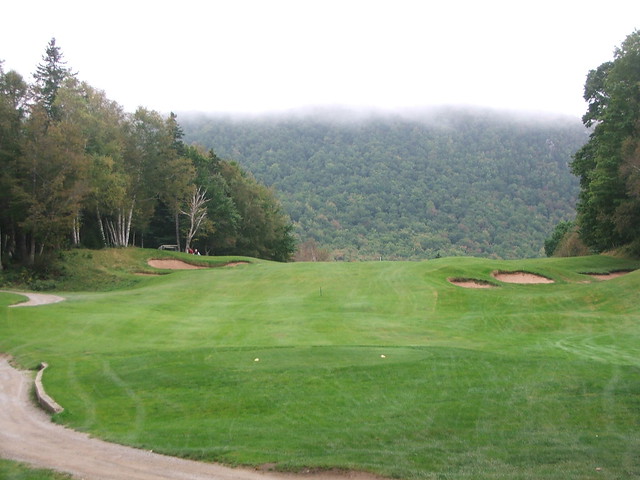
The 8th hole as seen from the tee
After you hit over the hill, the hole drops dramatically back down the hill. The steep downhill approach makes judging the distance to the green tricky. As Thompson's biographer, James Barclay, wrote about the colorful man, "At times his work seemed to transcend architecture and become the poetry of shape."
The 8th green with its dramatic mountain backdrop
For a course designer I am sure it is the ultimite luxury to be given such a huge swath of land to work with and to be able to spread the course out to take advantage of what you think will make the best holes. Thompson did good in this regard. The course is a true walk in the park, but not for the faint of heart. The walks between the 6th and 7th holes and the 8th and 9th holes amount to miniature hikes through the woods. Although the course has an out-and-back routing, with the ninth hole playing far away from the first tee, the overall routing amounts to nothing less than genius.
The ninth is another unique golf hole that fits perfectly into the routing and landscape. You drive from an elevated tee down into a valley. Your approach to the 336-yard hole's green is sharply uphill and to the right, to a blind green. It is a very imaginative use of a ravine and side of a hill, since you cannot see the green until you walk to the top of the hill.
The 9th hole from the tee
The back nine is quite a challenge as well, although it is not as visually arresting as the front. The twelfth hole is a demanding par three that plays a crazy 240 yards from the blue tees!
The walk from the twelfth green to the thirteenth tee is one of the best in the world. After putting out on the testy par three you meander along a long path which hugs the Clyburn river, nestled among birch trees. The walk can be savored because it is more than a third of a mile long. The scenic beauty of Nova Scotia is in full evidence as you walk along the rocky river bank and breathe in the pure Canadian air. Golf is metaphorically called a walk in the park; at Highlands, it really is one.

The world class walk from 12th green to 13th tee
A good ten minute walk from green to tee? This Thompson fellow sounds a little nuts. Perhaps, but he routed a genius course and looked for the best place to put holes, apparently without too much regard about the walk from green to tee. Shinnecock Hills this is not, in terms of tees being next to greens. The total walk at Highlands was as tough as any I have done; the distance from the first tee to the eighteenth green is seven and a half miles. A typical walk on a golf course is five miles, so it is 50% more than average.
On balance, the back nine is not as dramatic as the front, partially because the first nine holes are all unique and very interesting. It got too dark for good pictures on the back (sorry), but I really liked the par five fifteenth hole, where Thompson uses his moguls strategically and with great impact.
Categorizing Highlands Links is difficult to do. Thompson called it a "mountain and ocean course." Although it isn't set at an elevation, it feels like it is since the terrain is so mountainous. Part of what makes Cypress Point unique is that it is routed through three types of landscapes: A forest, sand dunes and along the ocean. Highlands Links is similar: it starts along the Atlantic, crosses a lake and river tributary with marshland, and is routed through the forest. I don't compare courses to Cypress Point without giving it a great deal of thought, but in this instance it is an apt comparison. The grandeur of Highlands is worthy to be among the world's best.
I would personally rank Highlands Links higher on the list of top ranked courses. Rather than #64, perhaps in the top 25 or 30.
Pre-war golf course architects were sometimes colorful characters: Tom Simpson and A.W. Tillinghast come to mind. Thompson seems to fit the same mold: A lover of thick steaks, expensive cigars and Canadian Rye, he has been described as red faced with a "roast-beef complexion". His design skills matched his big reputation.
As I mentioned, Highlands Links is located off the Cabot Trail, a spectacularly scenic part of the world with an abundance of lobsters. On this trip I was able to answer two of life's more vexing questions definitively. Is there such a thing as playing too much golf? And, is there such a thing as eating too much lobster? The answer to both questions is a resounding NO. Throughout our visit to Cape Breton Island we binged on cheap and plentiful lobster everywhere we went. The people of Nova Scotia are also among the friendliest in the world and are quite hospitable. It is a great place to visit.
My journey winds down
The opera is now in its last act. We all know who sings in the last act, don't we? She's ready to go; hopefully, she will belt out the final tune in short order!

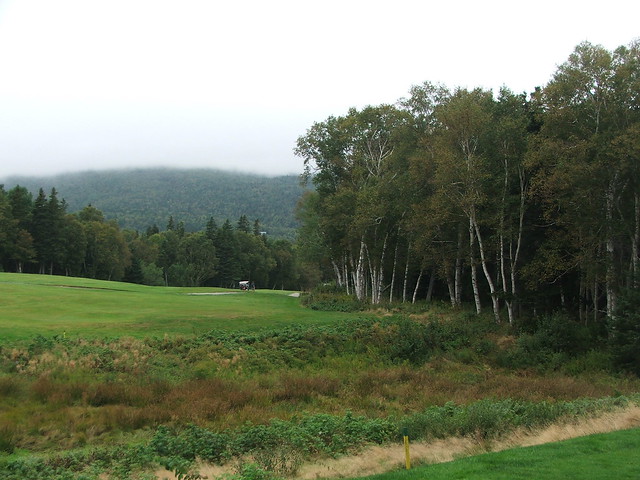

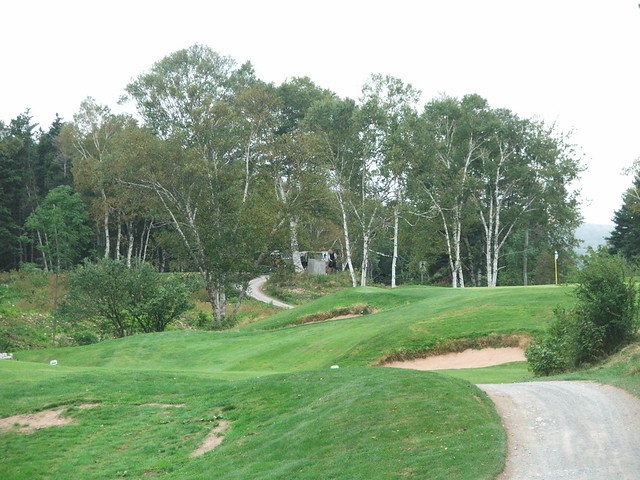
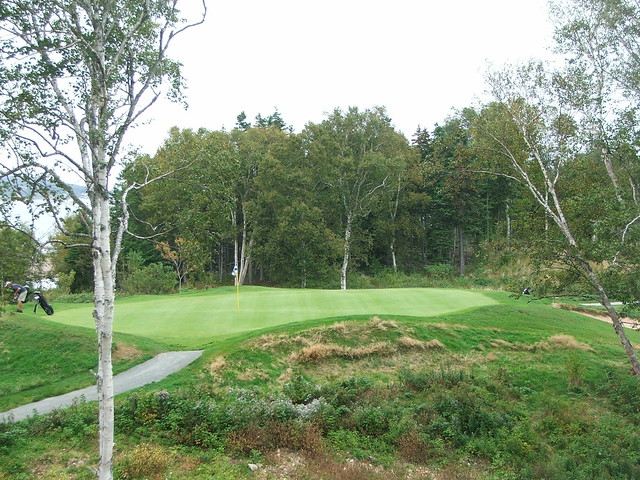

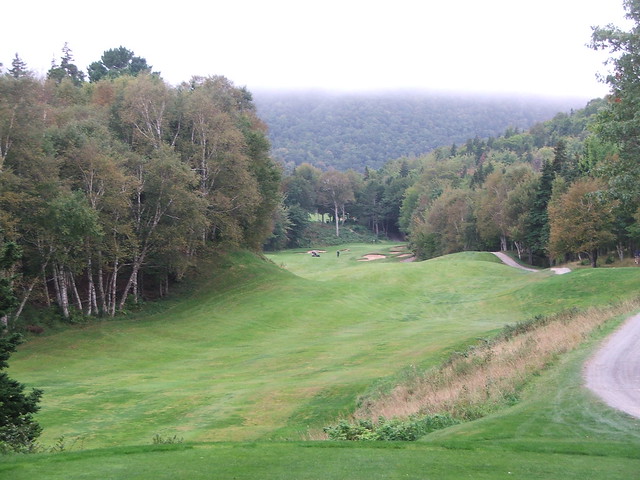
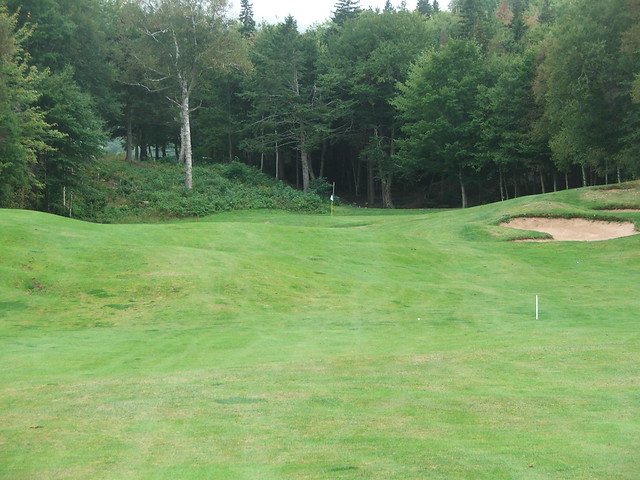

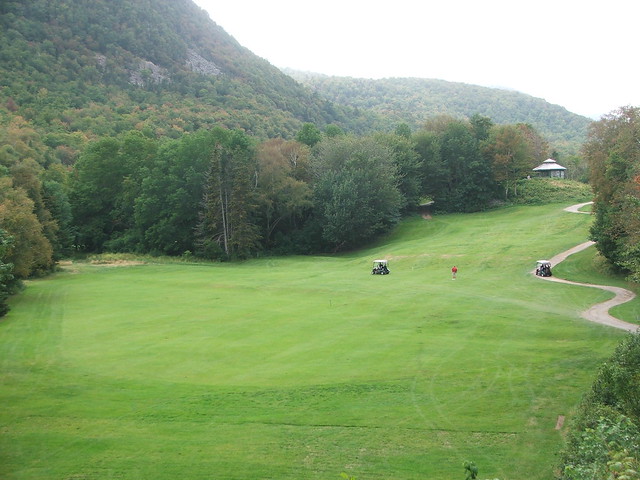
0 comments
Post a Comment